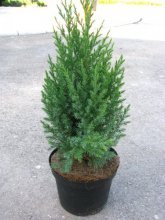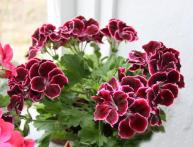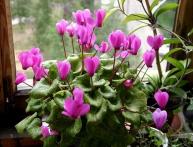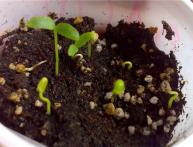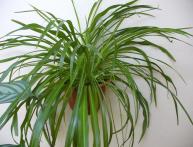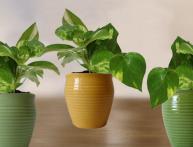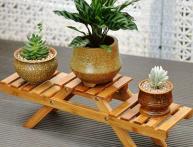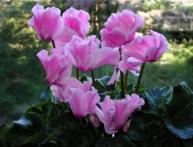Indoor juniper: complete care at home
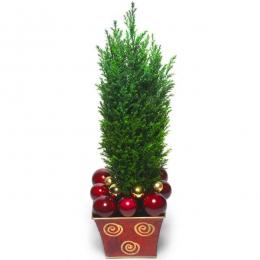
Juniper grows in the wild and is also planted in summer cottages. It perfectly decorates the area, complementing the flower beds. But you can grow indoors juniper. At home it forms a beautiful small tree.
It will not only complement the interior, but also purify the air, as it perfectly fights bacteria. This plant does not like dry air or heat. These and other nuances should not be forgotten so that juniper can develop normally in indoor conditions. If you do not follow simple rules, the plant will die.
Content:
Juniper propagation
In wild nature reproduction Juniper growth occurs through seeds that form in berry cones. But in indoor conditions this will bring a lot of trouble, so it is better to propagate the plant by cuttings. In this way, the appearance of the mother juniper is preserved.
But this procedure should be done with plants older than 8 years. In the spring, a cutting is cut, the length of which reaches 10 centimeters. It is planted in a peat mixture with sand, placed in the shade and covered with film. The plant needs regular spraying. 1-2 months will pass and roots will begin to appear. During this period, juniper is replanted.
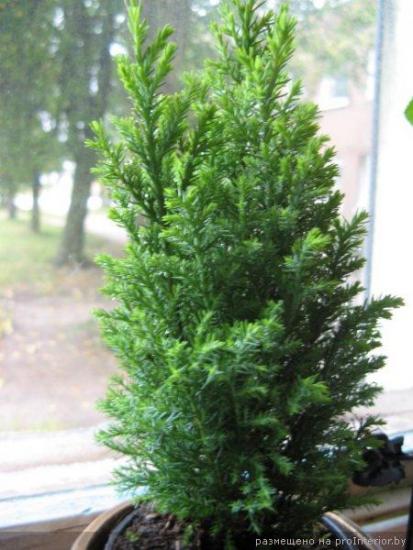
For growing at home, it is better to choose a Chinese type of plant. If we compare all varieties of juniper, the Chinese variety needs the mildest wintering conditions.
If a person decides to grow this plant in his room, it is not necessary to look for where to find stalk, and then wait for it to take root. To do this, you can go to a nursery or a special store where young juniper is purchased. But it is different from other indoor plants and requires special care.
Basic care recommendations
Caring for juniper indoors is easy; for this you need to take into account some recommendations. The plant does not tolerate stagnant moisture. Otherwise, root diseases may appear and leaves will begin to fall. To avoid such problems, do not water the juniper too much. There should be excellent air circulation in the room where the plant is located.
Every year juniper needs pruning. This procedure is carried out at the end of winter. Pruning is also done for plants that are developing in open ground. It is at the end of winter that juniper begins to grow rapidly, so gardeners advise transplanting the plant into another container. You also need to trim the roots, but this procedure should be repeated no more than once every 3-4 years.
When indoor juniper is grown, you need to choose a special place for it where it will be located. It is better to place it on the windowsill, which is the coldest in the house. A nearby battery can have a detrimental effect on the condition of the plant.
Video on how to propagate juniper:
Therefore, protection should be created for juniper.To do this, wrap the pot in plastic film; in this way, the plant will be protected from hot air. To do this, you should fasten one side of the film along the window sill, and attach the second along the window, placing it above juniper. The main thing is that the plant is not completely closed. Free air must flow to it.
Growing conditions and care
The plant loves light, so do not hide it in the shade. It should be close to the windows. In summer, you can take juniper outside, but in winter, a room without heating is ideal for the plant. It tolerates low temperatures calmly.
Heat, dry air and dust negatively affect juniper. For this reason, spraying should be done every day. In order for the plant to develop well, the necessary conditions must be created for it. This is what caring for him is all about. Despite the fact that juniper loves light, you need to choose a place for it where there is no prolonged sunlight.
In summer you also need to monitor the temperature. It should not rise above 20 degrees. Periodic exposure to the street is of great benefit to the plant, so it is recommended to take it out into the air.
In winter, a loggia or balcony is ideal for juniper to develop. After all, it is in such rooms that the temperature is usually kept low. But we must not forget that the plant is placed near the light. In this period watering should be reduced.
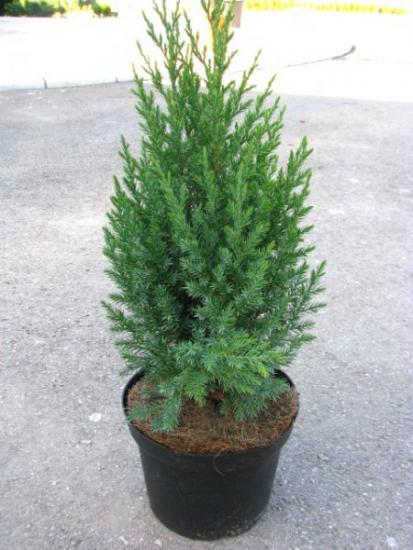
Juniper has some enemies, including:
- caterpillars
- spider mites
- mealybugs
- appearance of rust
Therefore, it is necessary to systematically monitor the condition of the plant and provide timely assistance.Indoor juniper should be fed periodically. It is best to use organic fertilizers. Humus is ideal for this. It is rarely allowed to apply mineral fertilizers, but you should not add a lot of them. The plant should be fed in small quantities in summer.
Transplanting a plant
Indoor juniper at a young age is replanted once a year. This procedure is carried out in the spring. When the plant is already quite old, it does not need to be replanted. It will be enough to change the top layer of soil. This must also be done annually.
Drainage is considered important for the plant. It is made from a turf-peat mixture to which sand is added.
For Cossack and hard juniper, a small amount of lime is also added to the soil. For Virginia variety into the ground you need to add clay. If you follow these simple recommendations, the juniper will develop normally and delight its owners.
Interesting information about the vegetable garden


